#french manuscript
Explore tagged Tumblr posts
Text






Currently obsessed with these naturalistic illuminations from a manuscript of De Proprietatibus Rerum (1447, Bibliothèque d'Amiens, ms. 399). I just know that whoever commisioned this must have hired the nearest artist with an insane obsession for birds before proper birdwatching was even a thing. They hired the nearest De arte venandi cum avibus fanboy.



Like, the fact that despite the stylized drawings you can clearly tell that these are a corvus corax, a corvus cornix?! Hello?!?!
I love you, unknown french artist from the 15th century.
#Edit: a couple people made me rightfully notice that what I thought could be a carrion crow#in absence of better candidates#could actually be a jackdaw#and that either way it doesn't even match the text it is meant to represent as it was a total misinterpretation of it#just to let everyone know!#thank you irl french andreas maler#illuminated manuscripts#medieval manuscripts#ornithology#ravens#middle ages#corvids#medieval history#medieval art#history of art
6K notes
·
View notes
Text
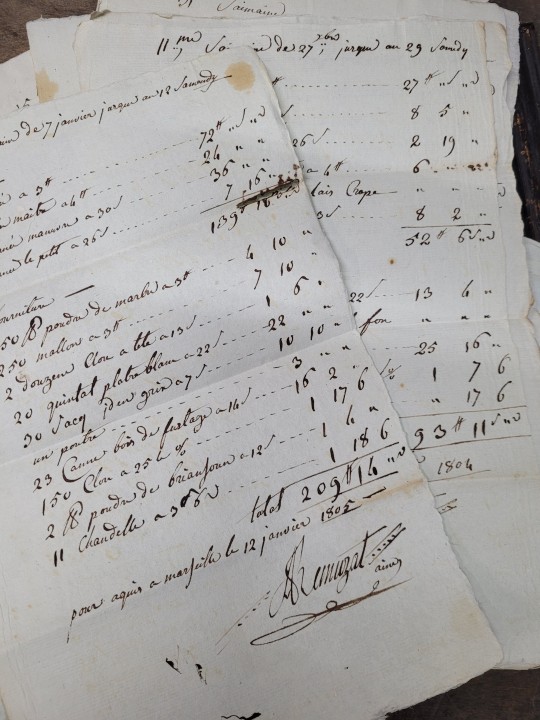

Antique French invoices ca. 1805 on handmade rag paper with faded sepia ink and raggedy edges

#brocante#decor#shabby#antique rag paper#fluffy paper#sepia ink#french decor#antiques from France#altered details#antique french paper#french ephemera#etsy#french manuscript#french style
0 notes
Text

Denise Poncher before a Vision of Death — Master of the Chronique Scandaleuse
#medieval#middle ages#art#denise poncher#death#prayer book#prayer#french#france#history#europe#european#illuminated manuscript#master of the chronique scandaleuse#skeleton#esoteric#religion#christianity#religious art#christian#sickle#sickles#soul
230 notes
·
View notes
Text

Mordred lays siege to the Tower of London, where Queen Guinevere, defended by two hundred knights, is concealed. Miniature from folio 81 verso of La Mort le Roi Artus (The Death of King Arthur), an Old French prose romance belonging to the Lancelot-Grail cycle. This manuscript, produced by an unknown hand ca. 1316, is now in the British Library.
#art#art history#Middle Ages#medieval#medieval art#Arthuriana#Arthurian legend#Guinevere#Mordred#miniature#manuscript illumination#illuminated manuscript#La Mort le Roi Artus#French art#14th century art#British Library
241 notes
·
View notes
Text
Y'all wanna know about a gender-non-conforming knight from 13th century France? No? That's okay- I'm fine with talking to myself.
I'm obsessed with gender performativity in early medieval texts- so obviously I had to know everything about Le Roman De Silence.
To preface-
So, long before there was the Marvel Cinematic Universe- there was the interconnected works of the Arthurian Legends. The original superheroes- King Arthur, Merlin, Morganna le Fey, and the rest of the cast. However, one of the lesser known (only arguably canonical) interconnected texts of the Arthurian legend hails from France. People argue over whether or not to include these texts as part of the cannon of King Arthur because it's technically french- and the french-english divide between characterization of all the main players of Arthur's court is remarkably different. Much research on this suggests the discrepancy of characterization is largely due to distance between where the stories originate, and sociopolitical tensions between the French and the English. Either people were too far apart to share stories- thus too far apart to keep characterization uniform, or they fucking hated each other enough to mess up the characterization on purpose. For example, many of the French portrayals of King Arthur paint him to be a rather terrible person, where English portrayals are generally more kind to him.
All that aside- many people will disagree that Le Roman de Silence should even be part of the Arthurian legend canon anyway- because it only mentions Merlin at the end of the poem and because it's a super french poem.
The main storyline is about this character named Silence. From the Old French Poem- Le Roman de Silence.
Gender? No- Never heard of it.
The latter half of the story in this poem is predicated on a complex mediation of Nature vs Nurture. What happens is that a baby is born into a wealthy family, and for sociopolitical reasons, the family decides to raise the girl baby as a boy. They name this child "silence." Silence grows up with full access to an education, as was typical for the boy children of aristocratic medieval families- this education becomes important later as Silence wrestle with where they fit into the larger social structure after maturing into adulthood. Essentially, they find the idea of marriage too boring and would like to be a Knight or Explorer instead. (I love them.) Anyway, it's fascinating to me that the conceptual ideas of nature and nurture are personified into being something like "deities" which are overseeing the growth of Silence through the ages- and so we get these deities commentary.
Silence wants to be a knight- so Nurture brags about being right that gender is more performative than it is biological. Then, later Silence grows up to be remarkably "pretty" and according to the deity of Nature- they brag about being right that biology and gender are intrinsically tied. It's such a thought-provoking mediation on gender as either performance or pure biology that I forget it was written in the 13th century- long before Freud or Lacan or any of the others who became hyper fixated on human presumption of gender as either a social category or a biological necessity.
I argued in a paper, once, that the narrative itself does actually finally end on the note that Gender is a performance, and it is tied into social roles only so the ruling class can have control of the population. That is why the stories ending shifts into horror-genre-esque of Silence marrying into the upper-ruling class.
I also have a strong urge to write a Fanfiction of Silence as a knight- who does not meet a sad fate but rather lives happily as a knight and eventually marries a princess. Okay- Okay? fine I said it. I said it-
Social pressure to marry?
The story takes a dark turn, however- when the King demands Silence to reveal themselves in front of the court. Obviously, even the author of the story was aware that misogynistic social standards would not allow for people to ever really be free of gender stereotypes and roles. So, Silence is then forced out of the adventurous lifestyle of a knight and into a marriage. Also, this is the place in the story where Merlin makes an appearance (I have a theory that Merlin is representative of the devil, and the author really hated that all AFAB people were forced into marriage back in 1200's. So that's why the devil shows up when all the bad shit is happening to Silence).
Inevitability and dismay-
What I find particularly interesting about this poem is the fact that the end, as Silence is forced into marriage and back into "proper" social roles for their assumed biological characteristics, is the fact that it is written like an early attempt at gothic horror!
So, one of the stipulations for something being a "gothic horror" is 1.) old, archaic, twisted buildings. (this blog is indeed named after my fixation with gothic horror elements, it's interplay relation to social reform, as its emphasis on decay as the tonal necessity for social indemnification). Anyway, the other most important aspect of gothic horror- is an overwhelming sense of desolation, isolation, and loneliness.
Sure, Silence is forced into marriage- but even with the forthright writing style of the author, we, as readers, are struck by Silence's loneliness. Thus, the "happily ever after" part of the storyline wherein the characters get married, as it traditional to chivalric romance, is recriminated against in subtext. Now, we have a moment in which the "happily ever after" is a creation of horror rather than peace.
Ending the narrative with marriage as equivalent to a loss of freedom and a sense of evermore-present loneliness, cumulating in the edifice of horror-struck fear in Silence at their own new future, is a remarkably bold social statement coming from a 13th century author.
I just think it's a really interesting text on the thematic points of negotiating Gender identity, in broader terms of performance and social roles, as much as it is a critique on the total social control that the monarchy held over the people of 13th century France.
Edit: I need to add that Silence themselves consistently rejects the idea that they are AFAB and instead only ever refers to themselves as "Silence" or "the knight"
#le roman de silence#medieval literature#13th century#manuscript#nature vs nurture#traditional gender roles#gender roles#france#french literature#french poetry#classic literature#academia#dark academia#gothic horror#marvel cinematic universe#king arthur#merlin#arthurian legend#arthurian mythology#arthurian literature#knight#medieval knight#gender#agender#nonbinary#chivalry#romantic literature#literary criticism#literary theory#poetry
303 notes
·
View notes
Text
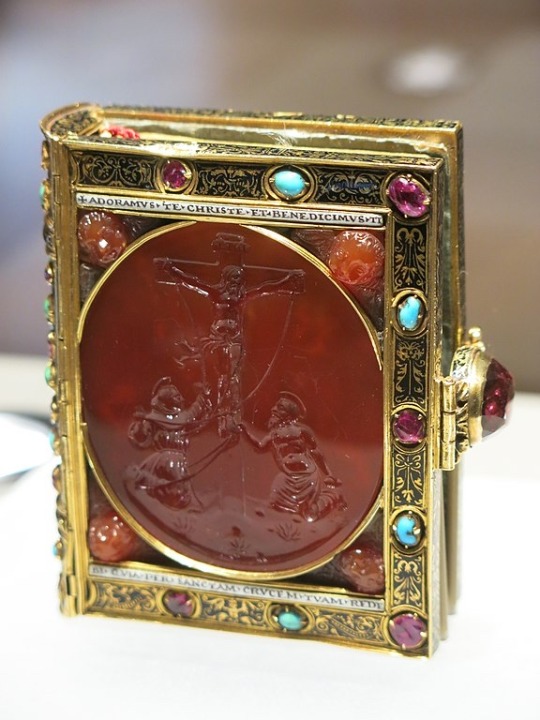
KING FRANÇOIS I BOOK OF HOURS (1578)
A dazzling masterpiece of the French Renaissance.
This small prayer book is bound in enamelled gold and gemstones. It was purchased in 1538 by King Francis I of France as a gift for his niece. The gems consist of carnelian (two intaglios and eight cameos), rubies (27 polished pieces), turquoise (24 cabochons) and rhodolite (one faceted stone in the book’s clasp that has been described as tourmaline since 1942). Most of the rubies were mined from the Mogok area of Burma (now Myanmar). Based on historical considerations, the turquoise could have originated from Persia or possibly Uzbekistan, and the carnelian from either India or Saxony. The faceted rhodolite from India or Sri Lanka, was most likely added to the clasp between 1842 and 1884. [view large]

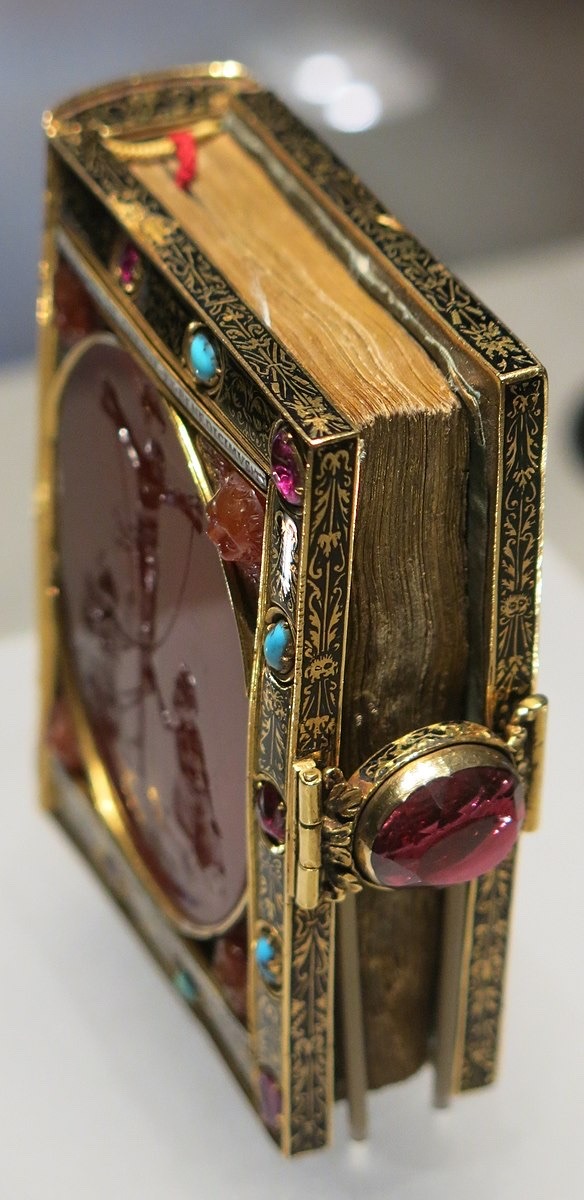
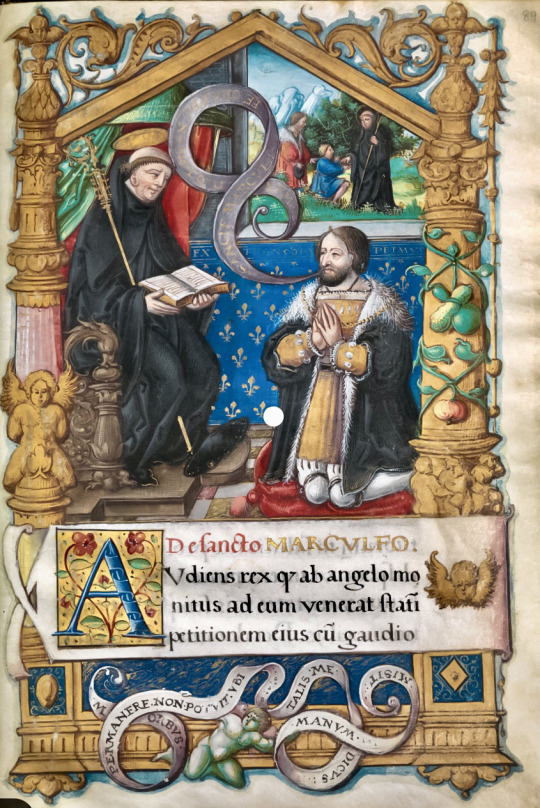

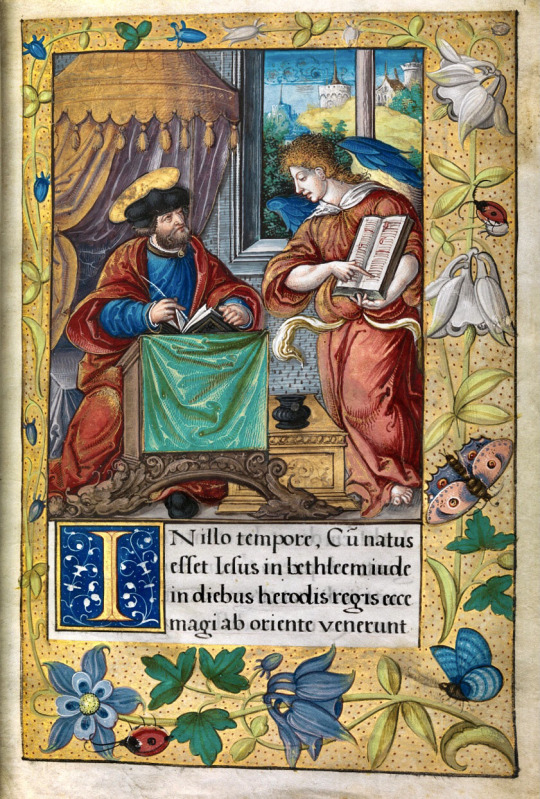
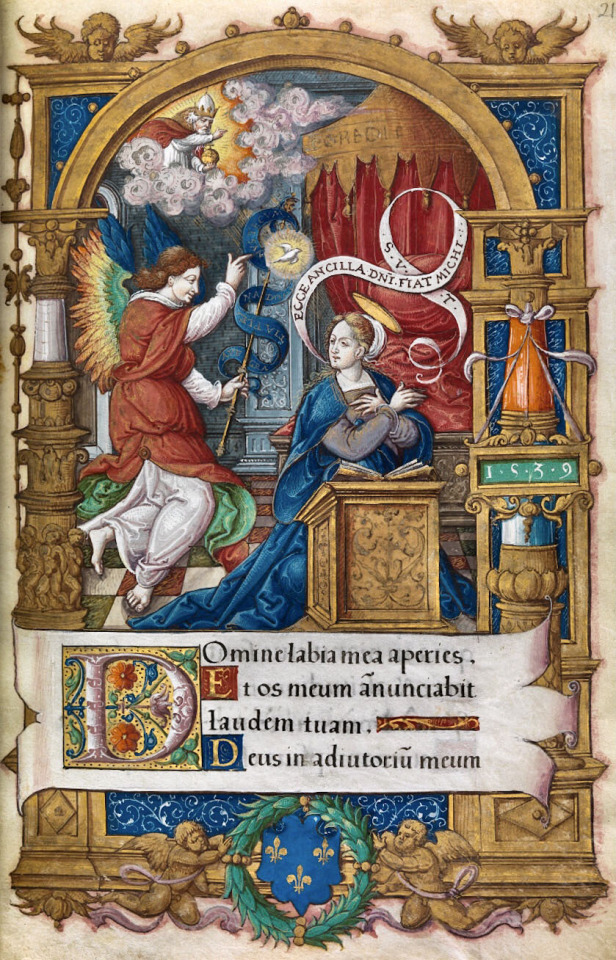


source
#beautiful books#book blog#books books books#book cover#books#vintage books#book of hours#treasure binding#book binding#book design#french#jeweled#illuminated manuscript#illuminated
816 notes
·
View notes
Text
Ms. Codex 849, written in France ca. 1522, is a small book containing recommendations for Francis I concerning the payment and collection of taxes. It's written in a clear humanist script with delightful gold initials alternating red and blue decoration.
🔗:
#medieval#manuscript#renaissance#rents#taxes#finance#illuminated#illuminated manuscript#france#french#16th century#humanist#book history#rare books
115 notes
·
View notes
Text
For #WorldLionDay please enjoy this fabulous medieval manuscript goth lion:

Bibliotheque Saint-Genevieve MS 1029 (France, 14th c.), f. 127v detail
#Bibliotheque Saint-Genevieve#illuminated manuscript#medieval manuscript#manuscript#manuscript marginalia#book art#illustration#French art#European art#medieval art#lion#feline#World Lion Day#animal holiday#animals in art#black animals
581 notes
·
View notes
Text

Historiated Initial R Depicting a Knight Fighting a Dragon by French School
31 notes
·
View notes
Text
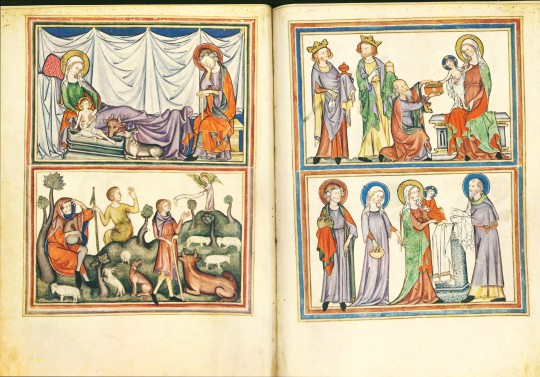
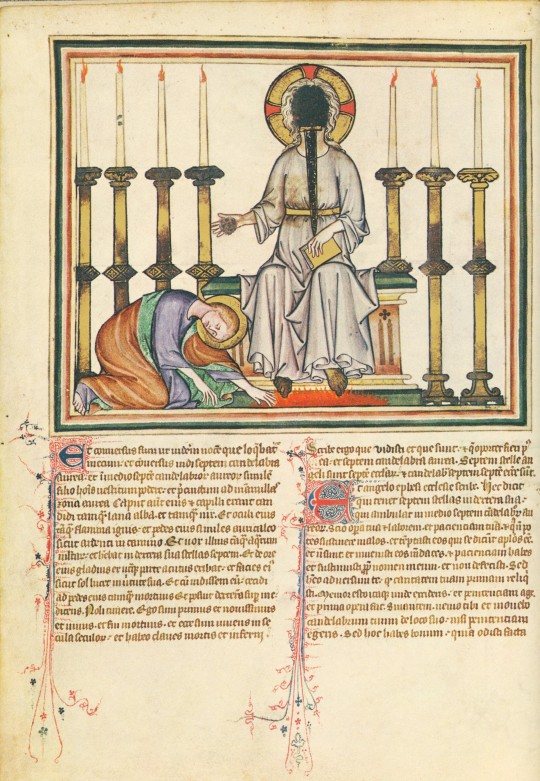



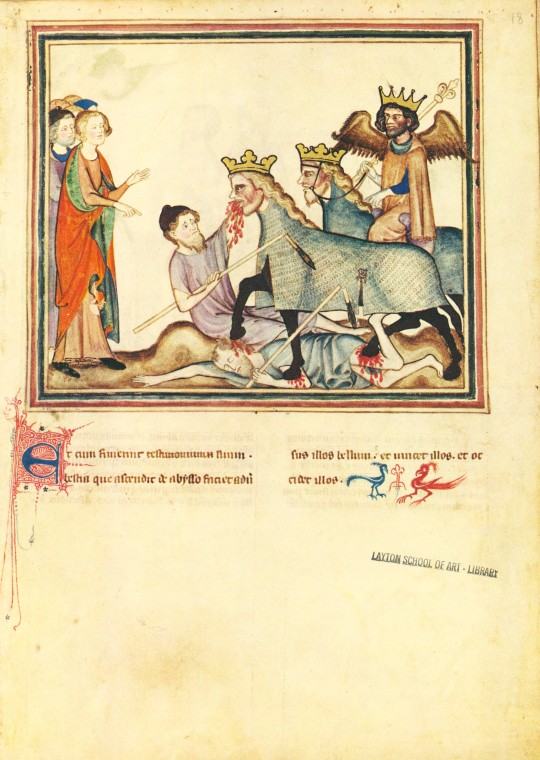


An Apocalyptic Manuscript Monday
This week we present our facsimile of the 14th-century Cloisters Apocalypse, published in 1971 by the Metropolitan Museum of Art in New York. As described in the introduction to the commentary about the manuscript, “[famine], pestilence, strife, and untimely death inspired apocalyptic fantasies and movements in Europe throughout the Middle Ages” (page 9), and this environmental influence led to the popularity of apocalyptic manuscripts like this French Apocalypse. Made in the 1330s for a Norman aristocratic couple, this manuscript has a few interesting details that set it apart from other Apocalypses, especially in relation to two other manuscripts in London (British Library, Add. Ms. 17333) and Paris (Bibliothèque Nationale, ms. Lat. 14410) that share similar formats, styles, and sequences with the Cloisters manuscript.
The first unique detail is the prefatory cycle of the life of Jesus in the introductory folios (1-2 verso). Since the Apocalypse of St. John the Divine (also known as the book of Revelation) was written by a titular St. John, prefatory cycles in Apocalypses usually consist of his life, rather than Christ’s. The other aspect of this manuscript that makes it distinct amongst its sister manuscripts is the addition of a dedication page on folio 38 verso. This page shows a man and woman kneeling in front of a tonsured saint and the Virgin and Child, respectively, representing the people for whom this manuscript was originally made for.
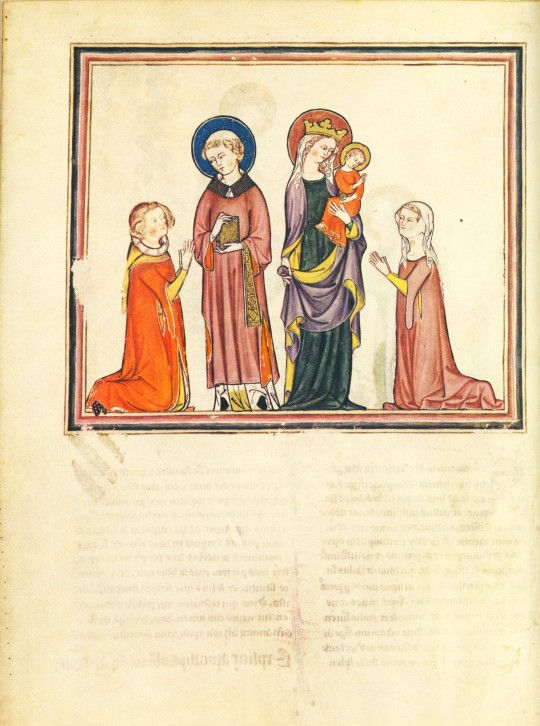
Interestingly, this manuscript also has multiple pages added to the original manuscript. Pasted on the inside front cover are handwritten provenance notes. The manuscript also did not originally include chapters and verses 16:14 through 20:3, and pages with this text were later added to the manuscript after the dedication page.
The materials used to create this manuscript include tempera, gold, silver, and ink on parchment with a later leather binding. If you are interested in seeing this unique Apocalypse manuscript, you can either use our facsimile, visit Gallery 13 of the Metropolitan Museum of Art’s Cloisters where the original is on display, or view their digital presentation of the manuscript.
View other posts on our facsimiles of illuminated manuscripts.
– Sarah S., Special Collections Graduate Intern
#manuscript monday#apocalypse#cloisters apocalypse#the cloisters#met#the metropolitan museum of art#manuscripts#illuminated manuscripts#french manuscripts#book of revelation#Revelation of St. John#facsimiles#manuscript facsimiles#Sarah S.
75 notes
·
View notes
Text









starting a movement of me and my homies rejecting the "medieval art' of the late 19th century and embracing medieval art from the middle ages cause it's incredibly beautiful 🙏🙏🙏
#medieval art#south asian art#Persian art#tamil art#chola art#French art#english art#medieval manuscripts#medieval sculpture#byzantine art#ethiopian art#coptic art
23 notes
·
View notes
Text

French illuminated manuscript
Souls leaving the bodies of the dead in "livre de la vigne nostre seigneur" (ca. 1450–1470)
97 notes
·
View notes
Text

A Group of Men Standing before Caesar and the Severed Head of Pompeius, from Livre de Bonnes Meurs
French, c. 1430
tempera colors, gold leaf, gold paint, and pen and ink
J. Paul Getty Museum
#illumination#illuminated manuscript#miniature#Julius Caesar#Pompey#Pompey Magnus#French#manuscript#art#painting#J. Paul Getty Museum#Getty Museum
63 notes
·
View notes
Text

"Hereafter follows the two Dukes of Brittany and Bourbon on horseback armed and with crests as if they were at the tourney."
by Barthélemy d'Eyck from Le Livre des tournois (Traicte de la Forme de Devis d'un Tournoi) or King René's Tournament Book
#medieval#middle ages#knights#knight#dukes#duke#brittany#bourbon#france#tournament#europe#european#armour#heraldry#crests#rené d'anjou#french#illuminated manuscript#history#art#mediaeval#tournaments#tourney#combat#duel
148 notes
·
View notes
Text

St. Nicholas, bishop of Myra, secretly gives dowries to three poor girls. Miniature executed by a French artist known as the "Master of Jean Rolin II," for folio 84r of the Book of Hours commissioned by a court official named Simon de Varie and completed in 1455. Now in the KB National Library of the Netherlands, The Hague.
#St. Nicholas#Saint Nicholas#art#art history#Middle Ages#medieval#medieval art#illuminated manuscript#manuscript illumination#miniature#Book of Hours#French art#15th century art#KB National Library of the Netherlands#Master of Jean Rolin II#religious art#Christian art#Christianity#Catholicism#saints
153 notes
·
View notes
Text

Look at my Napoleonic horror author….
#Jan Potocki#Potocki#The Manuscript Found in Saragossa#napoleonic#history#french literature#polish literature#Poland#early 19th century#19th century literature#duchy of Warsaw#werewolf#werewolves#lycanthropy#fairytales#wikipedia#my posts#napoleonic era
33 notes
·
View notes